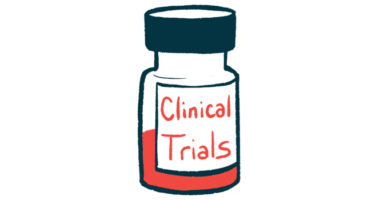Is It Do-si-Do or Do-si-Don’t With a New Home Healthcare Aide?

“I been in the right place, but it must have been the wrong time,
I’d have said the right thing, but I must have used the wrong line,
I’d have took the right road, but I must have took a wrong turn,
Would have made the right move, but I made it at the wrong time.”
The song “Right Place, Wrong Time” by the late New Orleans musical icon Malcolm John Rebennack Jr., aka Dr. John, the Nitetripper, conjures up the reciprocal uneasiness that can accompany any ill-suited pairing, however well intended. Something’s off, but you can’t put your finger on it. I touched on that two weeks ago when writing about my Hatfield-and-McCoy experience with a recent home healthcare aide.
One of the responses to that column came from someone seeking input for a loved one. The respondent’s family had been infiltrated by ALS one year prior. The time had come for the always indelicate caregiver contemplation. Choosing a good home healthcare aide is a popular and problematic enough topic to warrant current dialogue in the ALS News Today Forums.
The reader inquired about what to look for when assessing potential caregivers. My feedback could be summarized similarly to the emphatic, repeated one-word response of “location, location, location” as the top three predictors of a restaurant’s success. Concerning ALS care and selecting a home healthcare aide, one can’t go wrong with “experience, experience, experience.”
ALS is the antithesis of heterogeneity. Therefore, nothing can ever prepare someone for the exact way the disease will unfold. But general types of circumstances are apt to occur. If a caregiver has already encountered and successfully overcome a type of episode in the past, the less likely they are to panic when something similar happens in the future. And panic, after all, is a staunch ally of ALS in the battle for one’s body, mind, and soul.
Sadly, it’s a short list in the figurative Yellow Pages when searching for a “world-class caregiver, ALS experience preferred.” I have required an aide for over seven years. In that time, I’ve had only three who had previously been exposed to the twilight zone of ALS. And what a difference it made!
They knew by rote which joints were prone to painful extensions. They wouldn’t debate whether a 911 call was in order in response to a prolonged mucus clearing. They appreciated the delicate fragility of my skin and were proactive in their attempts to protect it. In one case, we had a language barrier to overcome. Despite the obvious challenge, we did so swimmingly, proving that the ALS ordeal transcends the spoken word.
The learning curve is so dramatically less involved that my first question when on the lookout for a new caregiver is, “What is your experience with ALS caregiving?” If the answer doesn’t satisfy me, then I will pose it to the agency.
At that point, reality often manifests itself as “slim to none” as a predominant answer. In the “beggars can’t be choosers” existence that’s often in play, the only option may be to plow on.
I then delve into the commitment to training. Many agencies will allow a new aide to shadow the incumbent for one hour, which is clearly insufficient for ALS. I request two full sessions — one to watch and a second to do, under a watchful eye. Given the profit pressure that home healthcare agencies face, it shouldn’t surprise anyone that two of the four agencies I’ve worked with have balked at this plea.
Minimizing time lapses in which an ALS patient goes without a caregiver’s attention is always of the essence. At that point, I’ll ready myself to conduct some robust on-the-job training. I’ve developed, in explicit detail, a step-by-step primer on what makes for a safe and satisfactory care episode. Some of the steps appear as a decision tree: “If that happens, employ this measure.”
I try to anticipate every potential anomaly to the routine and make sure we touch on them before embarking on our maiden journey. I will go so far as to insist that the new aide and I watch a video together that demonstrates the correct operation of my nonmainstream lift.
At some strategic point during our introductory time together, I’ll point out that for the first week, I’m the boss. Thereafter, they are. My initial intent is to follow a proven and safe method. I harbor no illusions that it’s optimal. As their comfort grows, we’ll do things increasingly their way.
Ultimately, the new caregiver’s reactions to, and questions about, this bolus of information serves to tamp down the often palpable mutual anxiety. It’s about both the journey and the destination for each party. If done properly, the caregiver and the cared for can share a few moments akin to what the Cure sings about in “Lovesong”: “Whenever I’m alone with you/ You make me feel like I am whole again.”
Note: ALS News Today is strictly a news and information website about the disease. It does not provide medical advice, diagnosis, or treatment. This content is not intended to be a substitute for professional medical advice, diagnosis, or treatment. Always seek the advice of your physician or other qualified health provider with any questions you may have regarding a medical condition. Never disregard professional medical advice or delay in seeking it because of something you have read on this website. The opinions expressed in this column are not those of ALS News Today or its parent company, Bionews, and are intended to spark discussion about issues pertaining to ALS.








Leave a comment
Fill in the required fields to post. Your email address will not be published.